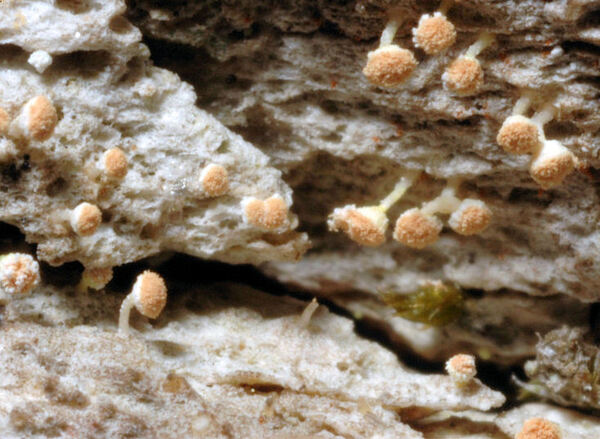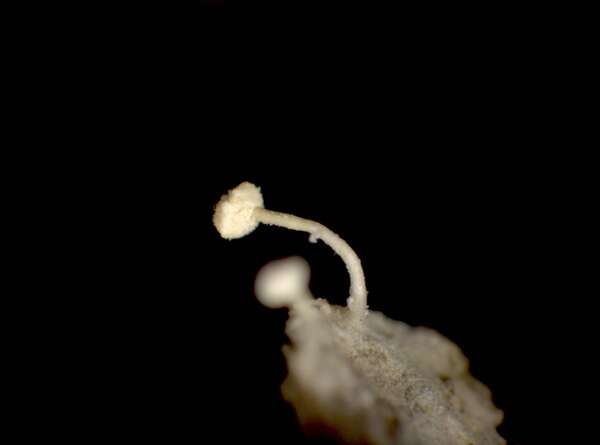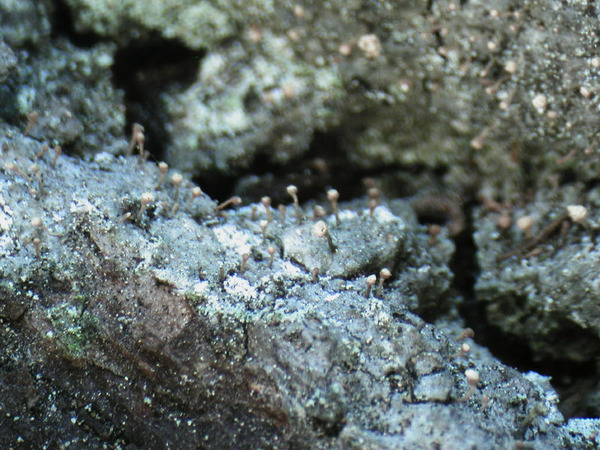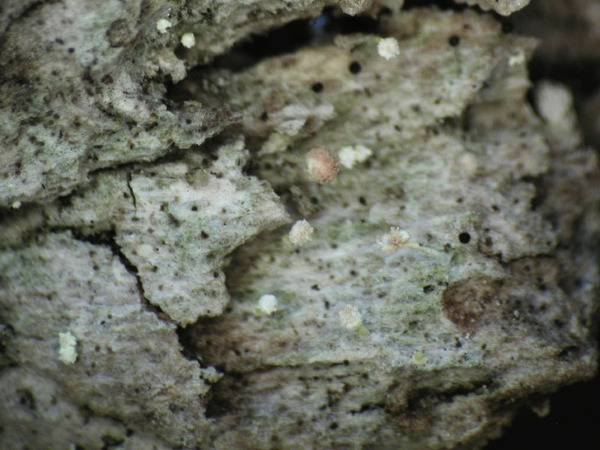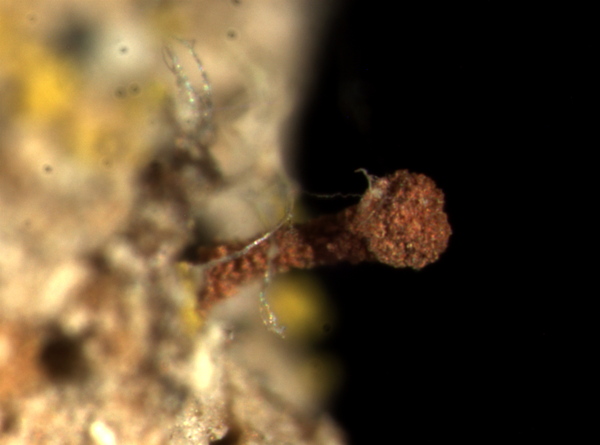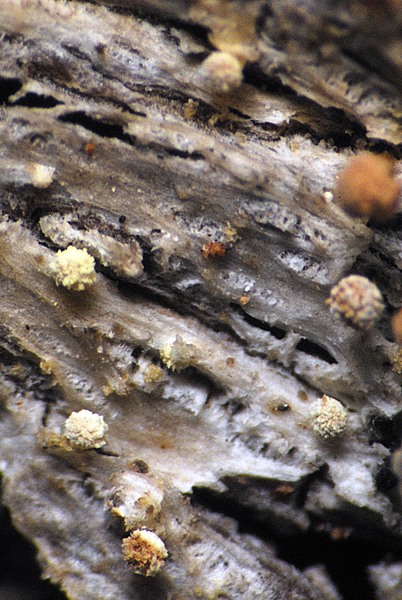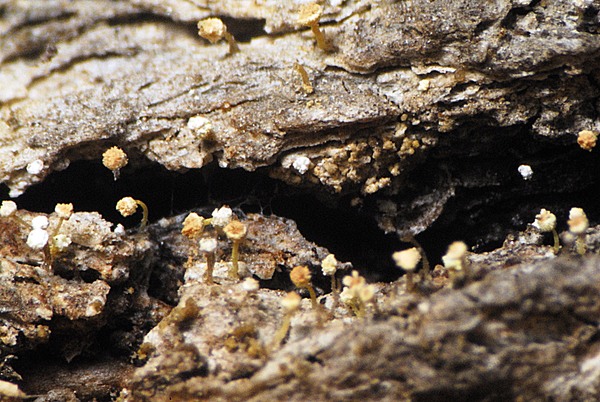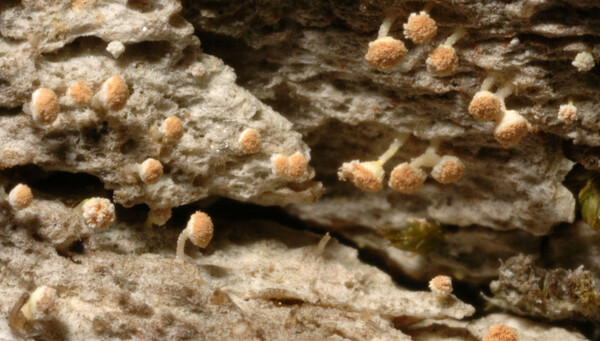Sclerophora pallida (Pers.) Y.J. Yao & Spooner
Kew Bull., 54, 3: 688, 1999. Basionym: Calicium pallidum Pers. - Ann. Bot. (Usteri), 7: 20, 1794.
Synonyms: Coniocybe curta H. Magn.; Coniocybe nivea var. pallida (Pers.) Arnold; Coniocybe pallida (Pers.) Fr.; Coniocybe pallida var. leucocephala (Wallr.) Schaer.; Coniocybe subpallida Nyl.; Sclerophora coniophaea (Norman) Mattsson & Middelb.; Sclerophora nivea (J.F. Gmel.) Tibell
Distribution: N - Ven (Puntillo & Puntillo 2009), TAA (Nascimbene & al. 2007b, Puntillo & Puntillo 2009), Lomb (Puntillo & Puntillo 2009). C - Tosc (Puntillo & Puntillo 2009), Umb (Ravera & Di Toma 2003, Ravera & al. 2006), Abr (Puntillo & Puntillo 2009, Gheza & al. 2021), Mol (Vezda Lich. Rar. Exs. 356, Nimis & Tretiach 1999, Caporale & al. 2008, Puntillo & Puntillo 2009), Sar (Puntillo & Puntillo 2009). S - Camp (Aprile & al. 2003b), Bas (Puntillo & al. 2009, 2012), Cal (Puntillo 1994, 1996, Puntillo & Puntillo 2009), Si (Schicchi & al. 1997, Ottonello & Isocrono 2004, Puntillo & Puntillo 2009, Campisi & al. 2020).
Description: Thallus endosubstratic, poorly evident. Apothecia at first sessile and covered with a yellow pruina, then stalked and pin-like, 0.4-0.7 mm high. Stalk straw-yellow to pale grey in old specimens, epruinose, translucent when wet, consisting of hyaline, non-sclerotized, periclinally arranged hyphae. Capitulum broadly ovoid to lenticular, 0.25-0.32 mm across, Exciple well-developed, forming a basal collar, consisting of anticlinally oriented, hyaline hyphae, the surface covered with a layer of colourless to yellow crystals (pruina); hypothecium pale yellowish brown, with a slightly convex upper surface. Mazaedium well developed, pale ochraceous, densely inspersed with minute, dark yellow crystals. Asci clavate, with a single functional wall layer, without apical structures, K/I-, dissolving at early stages, formed singly from ascogenous hyphae with croziers, with 2-seriately arranged ascospores. Ascospores 1-celled, globose, hyaline, 7-8 µm wide, with a verrucose ornamentation. Photobiont trentepohlioid. Spot tests: all parts of the ascomata including the yellow pruina K-, C-, KC-, P-, except the crystals in the mazaedium, which react K+ fleeting purple-violet (often with the formation of large crystals). Chemistry: thallus without lichen substances.Note: a temperate species found on old trees with base-rich bark, such as Acer, Ulmus and Fraxinus, in dry crevices of the bark. Certainly strongly declining, especially in Northern Italy, it is included in the Italian red list of epiphytic lichens as “Vulnerable” (Nascimbene & al. 2013c).
Growth form: Crustose
Substrata: bark
Photobiont: Trentepohlia
Reproductive strategy: mainly sexual
In underhangs rarely wetted by rain
Commonnes-rarity: (info)
Alpine belt: absent
Subalpine belt: absent
Oromediterranean belt: absent
Montane belt: extremely rare
Submediterranean belt: extremely rare
Padanian area: absent
Humid submediterranean belt: extremely rare
Humid mediterranean belt: absent
Dry mediterranean belt: absent

Predictive model
Herbarium samples
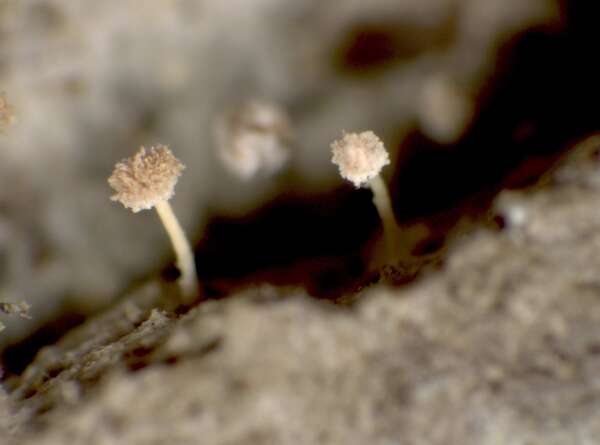

P.L. Nimis; Owner: Department of Life Sciences, University of Trieste
Herbarium: TSB (26667)
2001/11/30
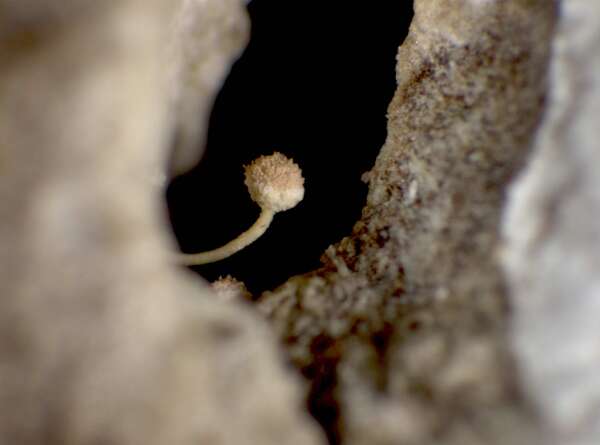

P.L. Nimis; Owner: Department of Life Sciences, University of Trieste
Herbarium: TSB (26667)
2001/11/30
Growth form: Crustose
Substrata: bark
Photobiont: Trentepohlia
Reproductive strategy: mainly sexual
In underhangs rarely wetted by rain
Commonnes-rarity: (info)
Alpine belt: absent
Subalpine belt: absent
Oromediterranean belt: absent
Montane belt: extremely rare
Submediterranean belt: extremely rare
Padanian area: absent
Humid submediterranean belt: extremely rare
Humid mediterranean belt: absent
Dry mediterranean belt: absent

Predictive model
| Herbarium samples |


P.L. Nimis; Owner: Department of Life Sciences, University of Trieste
Herbarium: TSB (26667)
2001/11/30


 Index Fungorum
Index Fungorum
 GBIF
GBIF
